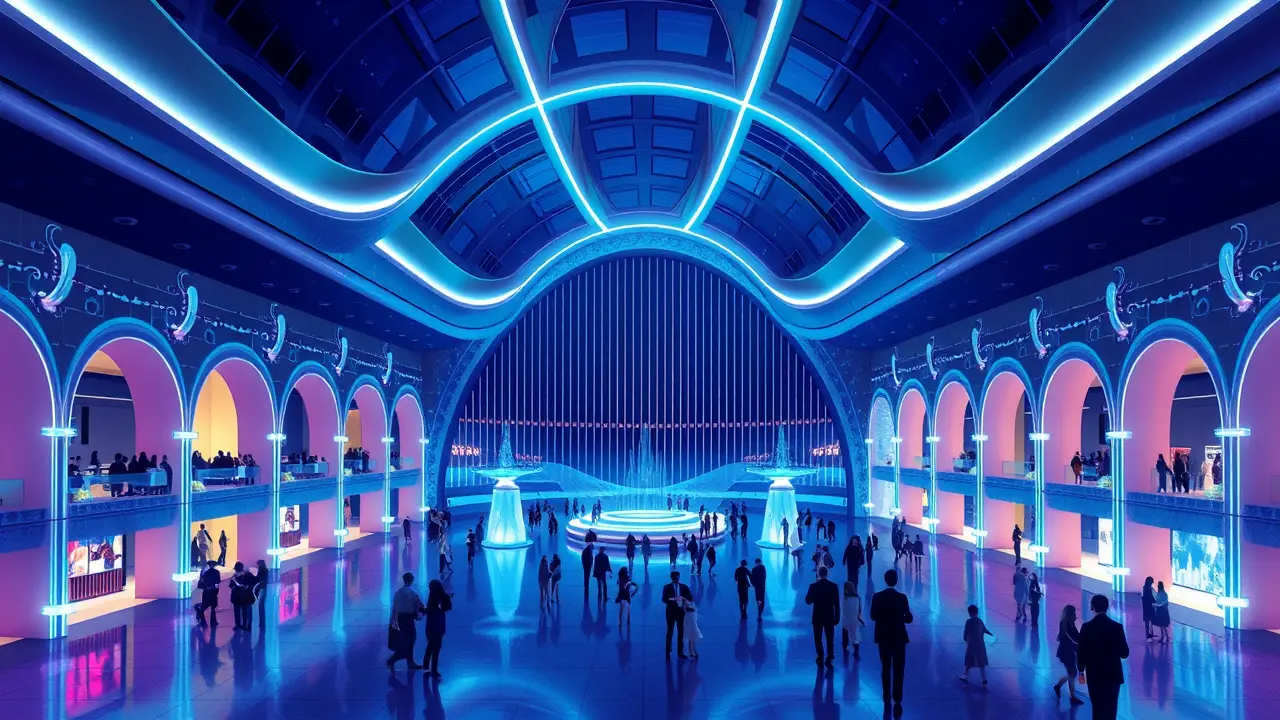
Entertainmenttheatre & artsArt Exhibitions
Qatar Expands Art Scene with New Quadrennial and Basel.
LI
Lily Harper
13 hours ago7 min read
Darling, grab your opera glasses because the art world's social calendar just got a major, glittering addition, and it's not in New York or London—it's in Qatar. The Gulf state, already a familiar face on the international art circuit with its established pavilion at the Venice Biennale, is now launching a brand-new quadrennial and, in a power move that has everyone whispering, bringing the blue-chip heavyweight Art Basel to its sun-drenched shores.This isn't just about hanging a few new paintings in a museum; this is a full-blown cultural coup, a deliberate and lavish campaign to position Doha as the new global epicenter for art, commerce, and, let's be honest, some seriously glamorous parties. Think of it as the cultural equivalent of a celebrity landing a Vogue cover and a major film role in the same season—it’s a statement of intent that cannot be ignored.For years, the narrative around Gulf art investment has centered on the deep-pocketed acquisitions of Qatari royalty, scooping up Picassos, Richters, and Koons for record-breaking sums to fill the stunning architectural marvels of the Museum of Islamic Art and the National Museum of Qatar, designed by the likes of I. M.Pei and Jean Nouvel. But this new initiative signals a dramatic shift from being a private, albeit spectacular, collector to becoming a public, pulsating hub of the global art market.The question on every art insider's lips, from the dealers in Mayfair to the curators in Chelsea, is whether this glittering vision can be sustained. Can Qatar, with its immense sovereign wealth, truly cultivate a thriving, organic art *market*—one with a vibrant local gallery scene, a collector base beyond the state apparatus, and a sustainable ecosystem of artists, critics, and patrons—or is this destined to remain a breathtakingly beautiful, state-funded spectacle? The stakes are as high as the atrium in the Qatar National Convention Centre.On one hand, the infrastructure is undeniably world-class, the funding is seemingly limitless, and the ambition is galactic. The introduction of a quadrennial places Qatar in the same league as documenta in Kassel, Germany, an event that defines artistic discourse for a generation, while Art Basel’s seal of approval brings instant credibility and a flood of international collectors, gallerists, and A-list celebrities.We’ve seen this movie before, of course, with Abu Dhabi’s creation of the Louvre and Guggenheim museums on Saadiyat Island, a bold attempt to build a cultural district from the sand up. Yet, the path is fraught with challenges.The very nature of a state-driven model raises questions about artistic freedom and the kinds of critical, potentially provocative works that can be shown, a tension that any major art fair must navigate. Furthermore, building a local market requires more than just importing international blue-chip art; it necessitates nurturing homegrown Qatari and Middle Eastern talent, supporting local galleries to take risks on emerging artists, and fostering a culture of art appreciation that extends beyond the opening night champagne.The success of this grand endeavor will be measured not just by the headlines generated during Art Basel Doha or the critical acclaim of its quadrennial, but by whether, a decade from now, we see a self-sustaining, dynamic scene where art is not only displayed and acquired by the state but is actively created, debated, and traded by a passionate community. It’s the difference between a stunningly curated red-carpet event and a lasting cultural movement. For now, all eyes are on Doha, watching to see if this latest, most ambitious act in its cultural rise will be a brilliant, fleeting season or the beginning of a dazzling new era.
#Qatar
#Art Basel
#art market
#international art
#quadrennial
#cultural events
#featured
Stay Informed. Act Smarter.
Get weekly highlights, major headlines, and expert insights — then put your knowledge to work in our live prediction markets.
© 2025 Outpoll Service LTD. All rights reserved.